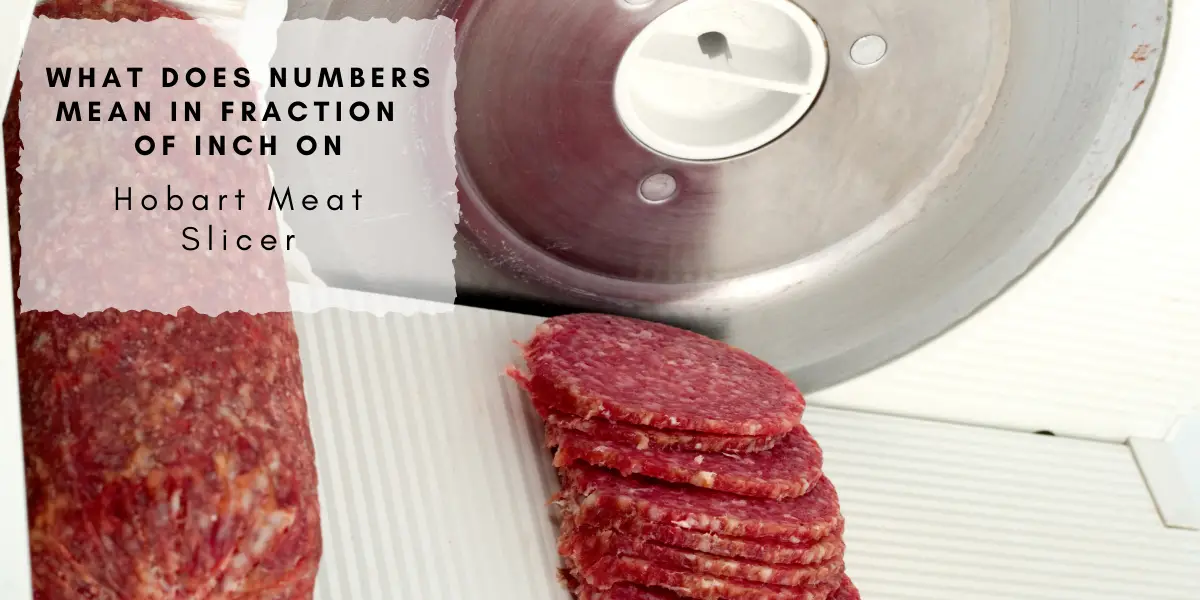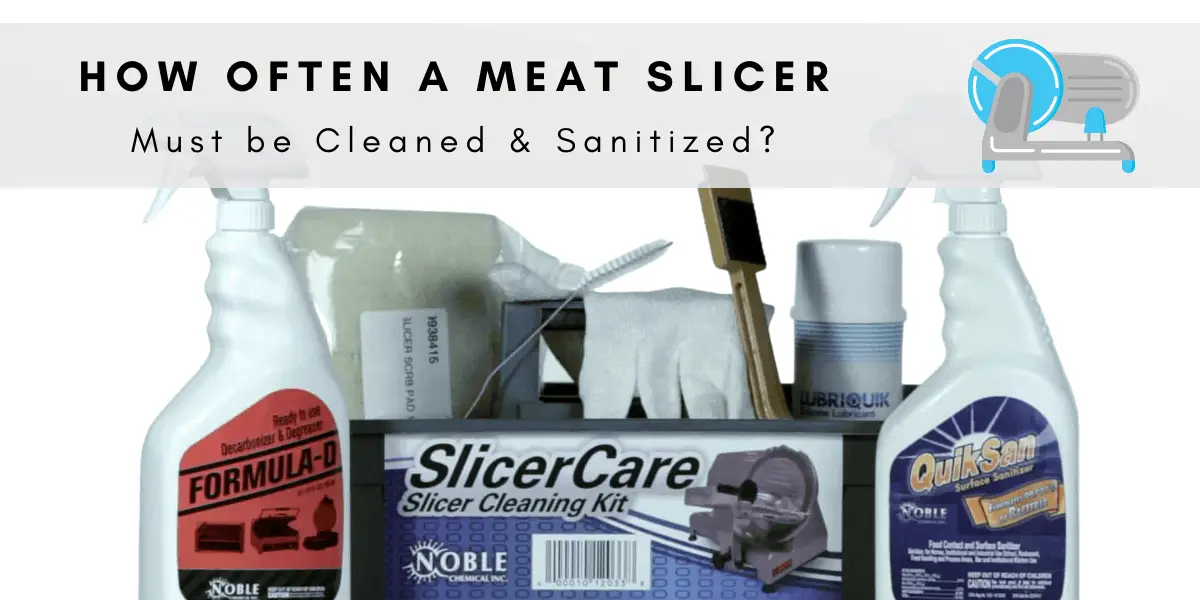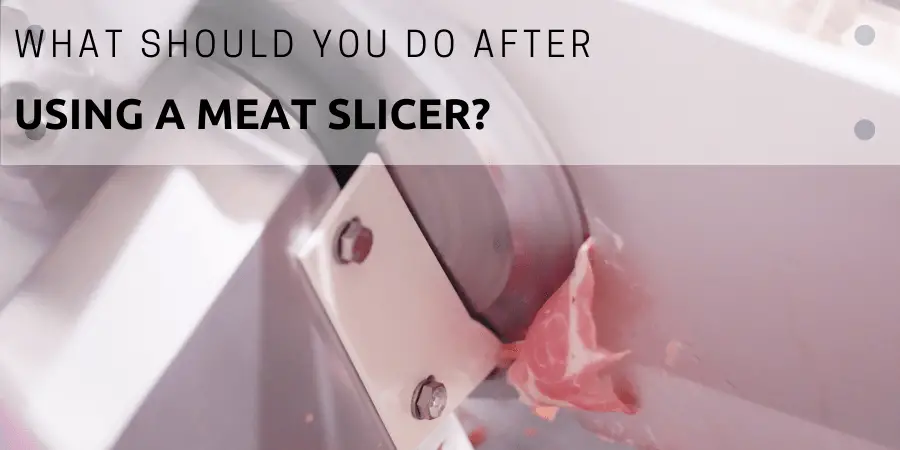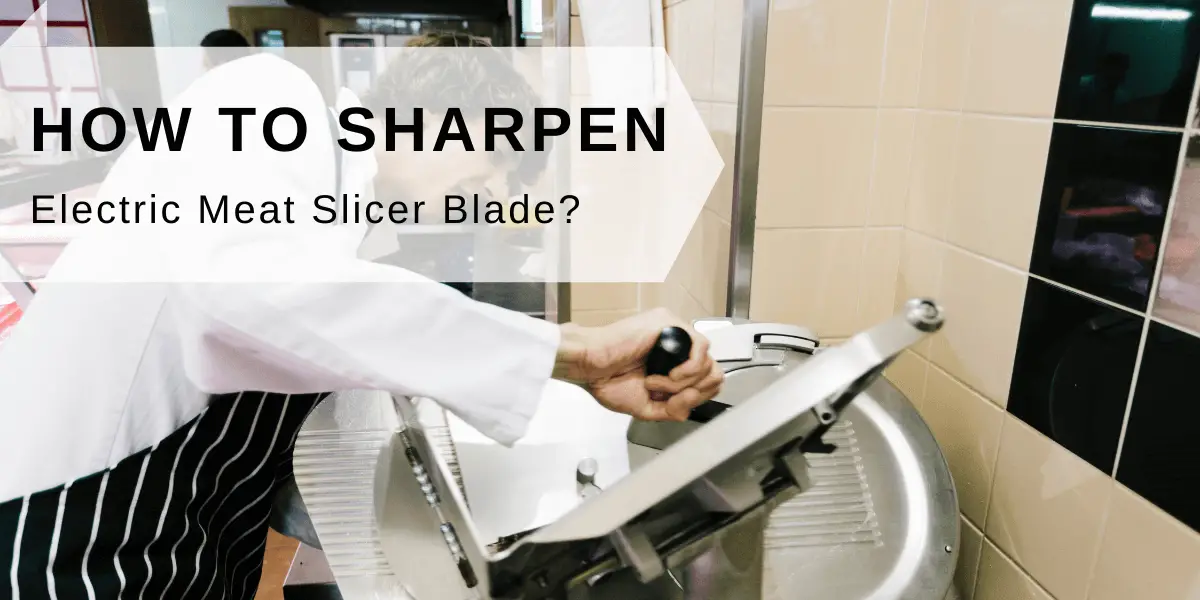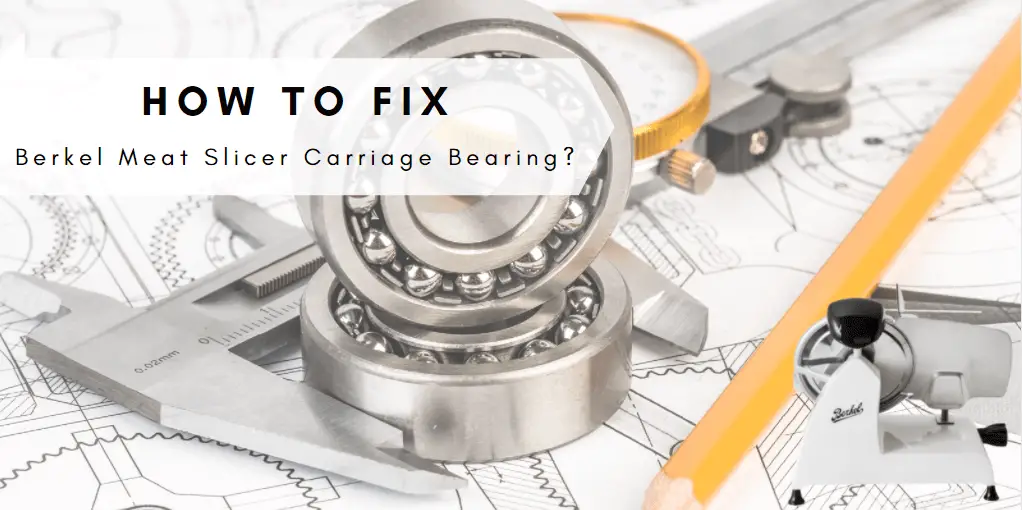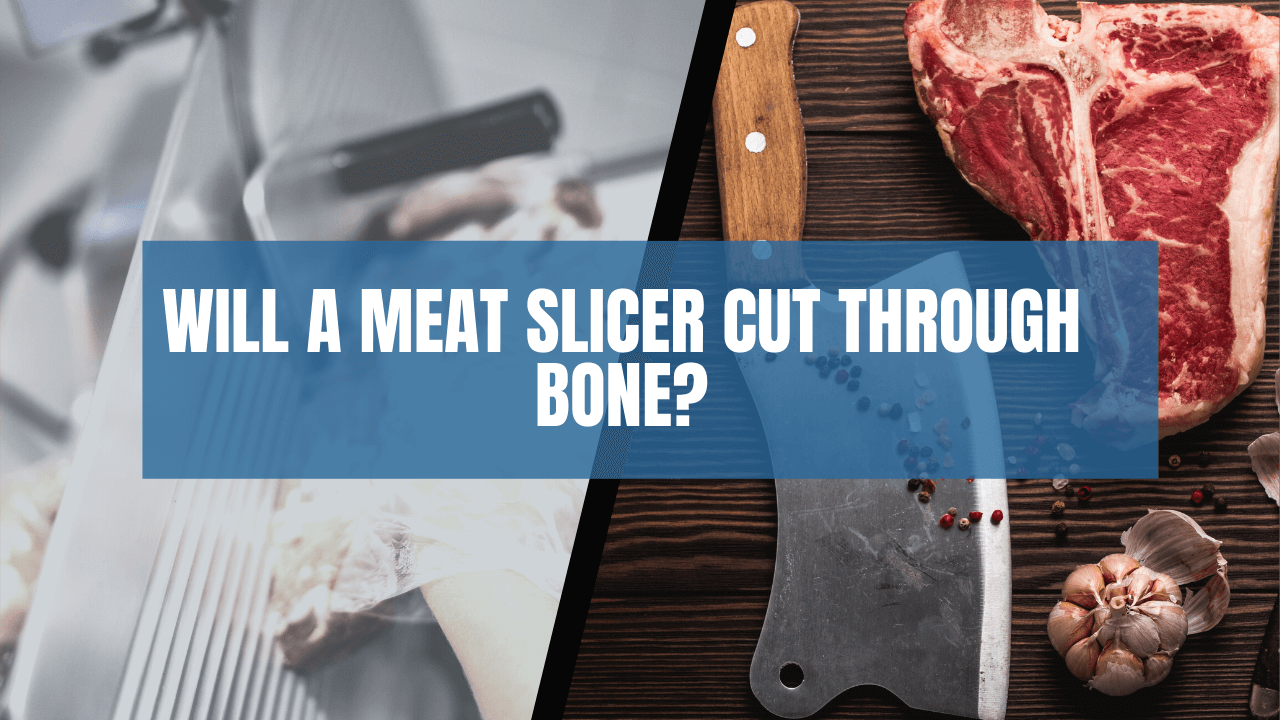When it comes to slicing meat, an electric commercial meat slicer is the most efficient and effective way to achieve this. With many features available, deciding which one will best suit your requirements can be hard. Some features like blade size, motor power, and safety features are essential to consider.
Why Invest In A Meat Slicer?
Investing in a meat slicer can be incredibly beneficial if you run a food-related business. There are numerous reasons to invest in one of these helpful tools:
- Efficiency: Meat slicers help speed up the slicing and dicing process significantly. This means your kitchen staff can work much faster, saving time and money.
- Consistency: With a quality meat slicer, you can be sure your food will be cut uniformly every time. This ensures that the final product looks consistent and has an even texture.
- Food Safety: Commercial meat slicers are designed with sanitation in mind. They are easy to clean and have various safety features designed to help reduce the risk of foodborne illnesses.
- Flexibility: Many meat slicers have adjustable blades, allowing you to cut different sizes and thicknesses for various recipes.
- Durability: The highest quality models are built to last and made from materials that won’t rust or corrode over time.
- Ease of Use: Look for a meat slicer that is easy to use, with clear instructions and ergonomic handles. This will help ensure your staff can use the machine safely and efficiently.
Features To Look For In A Commercial Meat Slicer
Sturdy Construction
- Stainless Steel Body: A meat slicer with a stainless steel body is a must for durability and easy cleaning. This material is rust-resistant and can withstand heavy use without showing signs of wear and tear.
- Heavy-Duty Components: Ensure the slicer has robust gears and motors for consistent performance, even under continuous use.
Safety Features
- Safety Guards: Ensure the slicer has safety guards to protect users from the sharp blade and prevent accidents.
- Non-Slip Feet: This feature provides stability, preventing the machine from moving while in operation.
Adjustable Thickness
- Precision Control: A good slicer should allow you to adjust the thickness of your slices easily and accurately.
Ease of Cleaning
- Removable Parts: Look for a slicer with removable parts, making cleaning and maintenance a breeze.
- Dishwasher-Safe Components: Opt for a slicer with dishwasher-safe components, saving you time and effort during cleanup.
Versatility
- Multiple Blade Options: A versatile slicer has multiple blade options for different slicing needs.
Motor Power
- Sufficient Horsepower: Choose a slicer with enough motor power to handle your required workload.
Warranty and After-Sales Support
- Solid Warranty: A good warranty will give you peace of mind, knowing that the manufacturer stands behind its product.
- Responsive Customer Service: Make sure the company offers excellent customer support to address any issues or concerns you may have.
Additional Features
- Built-In Sharpener: A built-in sharpener will keep the blade in prime condition, ensuring consistent slicing performance.
- Noise Reduction: Opt for a slicer with noise reduction features, making it suitable for quieter environments.
Comparing Different Brands And Models
- Read Customer Reviews: Review customer reviews and ratings to understand real-world performance and reliability.
- Test the Slicer: If possible, try using the slicer before making your final decision to ensure it meets your requirements.
Price Vs. Value
- Determine Your Budget: Set a budget and stick to it, but remember that a higher upfront cost may be worth it in the long run.
- Consider Longevity: Investing in a high-quality slicer will pay off in the long run, as it will last longer and require less maintenance.
Types of Commercial Meat Slicers
Commercial meat slicers are essential for various businesses, such as delis, restaurants, and supermarkets. They allow efficient and consistent slicing of meats, cheeses, and other food items. There are three main types of commercial meat slicers: manual, automatic, and semi-automatic. Understanding the differences between these types will help you choose the perfect fit for your business.
1. Manual Meat Slicers
Manual meat slicers require the user to manually push the food carriage back and forth across the blade, resulting in even and consistent slices. They are typically more affordable than automatic slicers and provide greater control over the slicing process.
Pros:
- Lower upfront cost compared to automatic slicers
- Greater control over slicing thickness and speed
- Suitable for businesses with lower volume slicing needs
Cons:
- It can be labor-intensive, especially for high-volume slicing tasks
- It may be slower than automatic slicers
2. Automatic Meat Slicers
Automatic meat slicers have an electric motor that moves the food carriage back and forth, eliminating the need for manual operation. Users can set the desired thickness and let the machine do the work, which can be a significant advantage for businesses with high-volume slicing needs.
Pros:
- Increased efficiency and speed compared to manual slicers
- Ideal for businesses with high-volume slicing requirements
- Reduced labor costs and fatigue
Cons:
- Higher upfront cost compared to manual slicers
- It may require more maintenance due to additional mechanical components
3. Semi-Automatic Meat Slicers
Semi-automatic meat slicers offer a hybrid solution, combining the best features of manual and automatic slicers. Users can choose between manual and automatic operation depending on their slicing needs. This versatility makes semi-automatic slicers popular among businesses requiring precision and efficiency.
Pros:
- Versatility to switch between manual and automatic operation
- Suitable for businesses with varying slicing volume requirements
- Provides a balance between control and efficiency
Cons:
- Higher upfront cost than manual slicers, but typically lower than fully automatic models
- It may require more maintenance than manual slicers due to additional mechanical components.
How Do You Sharpen A Commercial Meat Slicer?
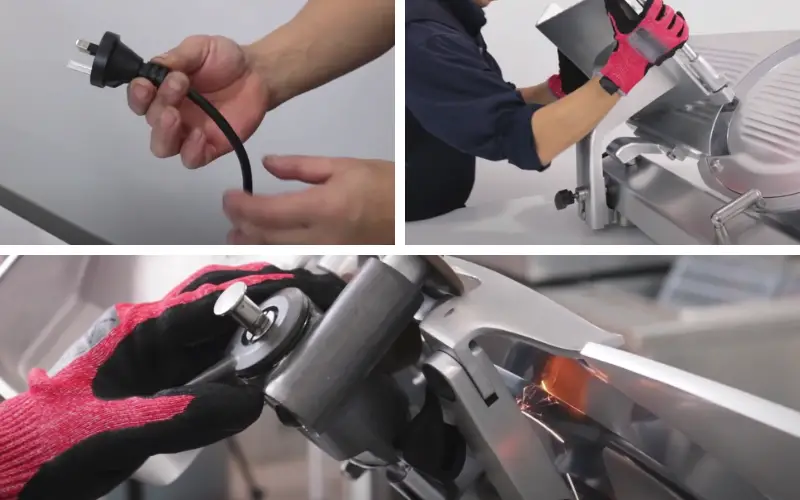
Step 1: Unplug the commercial meat slicer and remove the blade guard.
Step 2: Use a screwdriver to unscrew the blade from the hub of the commercial meat slicer. Please keep track of how it was installed so you can replace it correctly later.
Step 3: Clean off any residue from the blade with a wet rag and dry it off.
Step 4: Start honing the blade’s cutting edge using an adjustable sharpening stone. Move the stone in a clockwise motion while keeping your strokes even. Remember to keep your fingers away from the blade!
Step 5: Flip the stone over and grind the blade while moving it counterclockwise.
Step 6: Wipe the blade with a wet rag and dry it again.
Step 7: Put the blade back on the hub of your commercial meat slicer, ensuring you install it the same way as before.
FAQs
What is the best brand for commercial meat slicers?
There isn’t a one-size-fits-all answer to this question, as the best brand for you will depend on your specific needs and budget. However, some reputable brands include Hobart, Berkel, and Globe.
How often should I clean my commercial meat slicer?
It’s best to clean your meat slicer after each use to ensure optimal hygiene and performance.
Can I use a commercial meat slicer for slicing other food items?
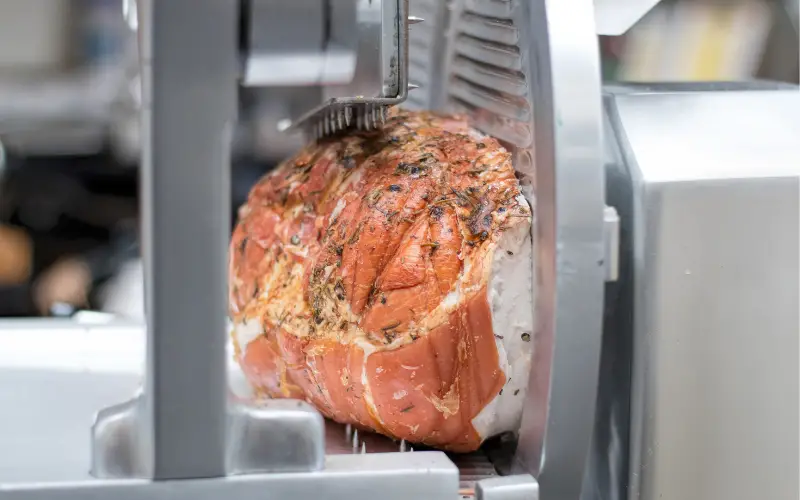
Yes, many commercial meat slicers can also be used for slicing other food items, such as cheese, vegetables, and bread, making them versatile kitchen tools.
How do I maintain the sharpness of the slicer blade?
Regularly sharpening the blade using a built-in sharpener or a separate sharpening tool is essential to maintaining its sharpness. Additionally, clean the blade thoroughly after each use to prevent buildup that can dull the blade.
Is a manual or automatic meat slicer better for my business?
The choice between a manual and automatic meat slicer depends on your requirements. Manual slicers are typically more affordable and allow for greater control, while automatic slicers offer higher speed and are ideal for businesses with high-volume slicing needs.
What is the ideal blade size for a commercial meat slicer?
Blade sizes for commercial meat slicers typically range from 9 to 14 inches. The ideal size depends on the types of products you’ll be slicing and the space available in your kitchen. Generally, larger blades are more versatile and suitable for a broader range of slicing tasks.
Conclusion
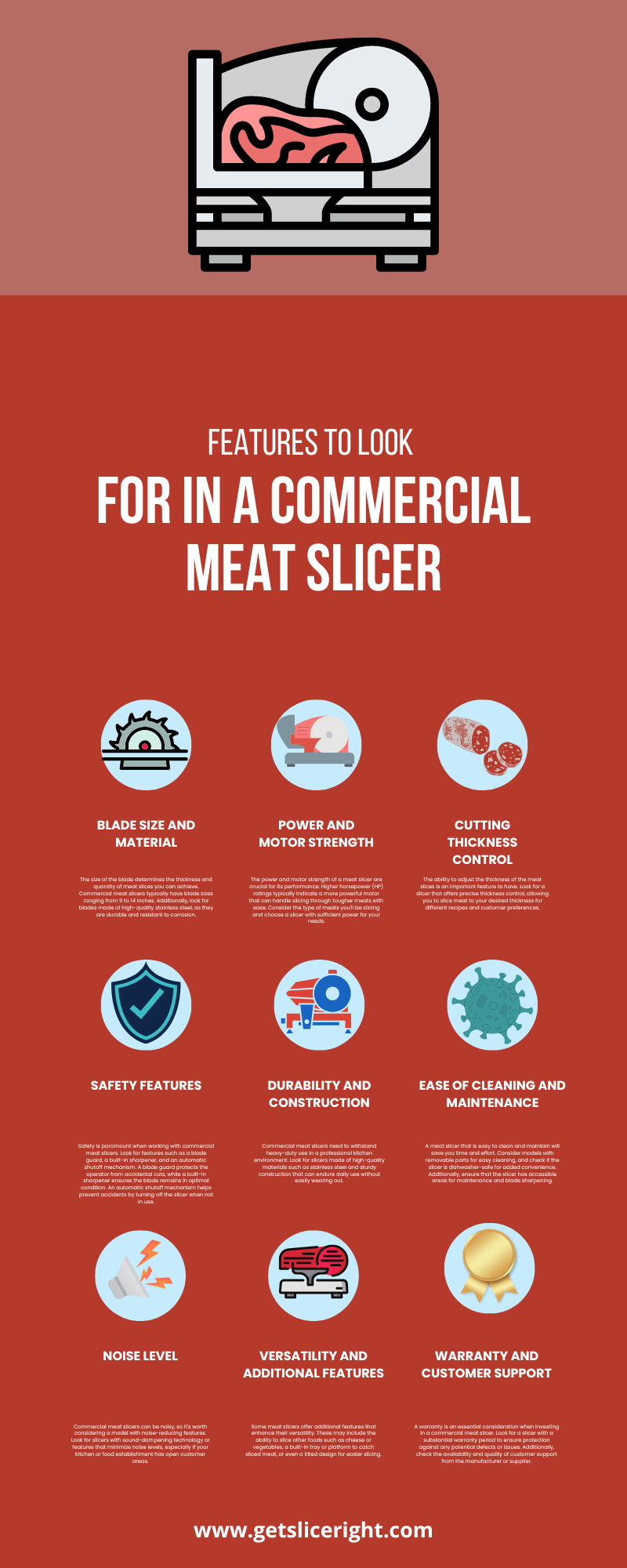
Selecting the perfect commercial meat slicer for your business is no small task by focusing on essential features such as sturdy construction, safety features, adjustable thickness, ease of cleaning, and versatility. Remember to compare different brands and models, read customer reviews, and consider the price vs. value when making your final choice. With the right slicer, you’ll enjoy improved efficiency, consistent results, and a worthwhile return on your investment.

John Hebdon is a food enthusiast, passionate chef, and author of various articles and blog posts related to food and cooking. With a deep love for all things culinary, John’s blog serves as a platform to share his extensive kitchen experiences with a broader audience.
In addition to his culinary expertise, John has a flair for writing and a natural ability to share his passion for food with others. His articles and blog posts are informative, engaging, and packed with practical tips for readers of all skill levels.
As a food enthusiast and writer, John is always on the lookout for new and exciting culinary experiences. Whether it’s trying out a new restaurant, experimenting with a new recipe, or simply sharing a favorite dish with friends and family, John is always eager to explore and share the world of food with others.

